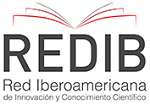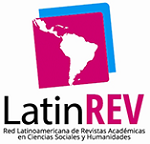Implementación de la Técnica de Correlación de Imágenes Digitales con Software Libre
DOI:
https://doi.org/10.15649/2346030X.875Palabras clave:
DIC, caracterización de materiales, medición de tensiones, mecánica experimental,, análisis de tensionesResumen
Hoy en día, la medición experimental de esfuerzos se hace por medio de técnicas que entregan campos completos de deformación o de la diagonal principal de una matriz de esfuerzos. La técnica de Correlación de Imágenes Digitales (DIC en idioma inglés) entrega desplazamientos del campo de visión mediante el análisis de fotografías digitales antes y después de una carga. Existen sistemas comerciales, que tienen un elevado costo, y sistemas de código abierto y gratis pero que no tienen soporte; esto hace que su implementación presente dificultades. El articulo trata de la apropiación de la técnica DIC usando software de código abierto. Para esto, se hicieron algunos ensayos de medición y se compararan con soluciones analíticas para evaluar la precisión de la medición experimental. Resultados se comparan con análisis por elementos finitos encontrando que para dar mediciones cualitativas, que puede ser el caso de demostraciones, un lente no muy especializado puede ser útil, mientras que para mediciones cuantitavas se requieren de acercamientos sólo dados por lentes macro.
Referencias
M.A. Sutton, J.J. Orteu y H. Schreier, “Image Correlation for Shape, Motion and Deformation Measurements: Basic Concepts, Theory and Applications”, Boston: Springer, 2009.
W.H. Peters y W.F. Ranson, “Digital Imaging Techniques In Experimental Stress Analysis,” Opt. Eng., vol. 21, no. 3, 1982, doi:10.1117/12.7972925.
E.M.C. Jones y M. Iadicola, “A Good Practices Guide for Digital Image Correlation,” iDIC. iDIC Society, p. 101, 08-Oct-2018.
J. Blaber, A. Adair y A. Antoniou, “Ncorr: Open-Source 2D Digital Image Correlation Matlab Software,” Exp. Mech., vol. 55, no. 6, pp. 1105–1122, 2015, doi:10.1007/s11340-015-0009-1.
S.H. Ju, S.H. Liu y K.W. Liu, “Measurement of stress intensity factors by digital camera,” Int. J. Solids Struct., vol. 43, no. 5, pp. 1009–1022, 2006, doi:10.1016/j.ijsolstr.2005.05.052.
V. Belloni, R. Ravanelli, A. Nascetti, M. Di-Rita, D. Mattei y M. Crespi, “py2DIC: A New Free and Open Source Software for Displacement and Strain Measurements in the Field of Experimental Mechanics,” Sensors, vol. 19, no. 18, p. 3832, Sep. 2019, doi:10.3390/s19183832.
E. Tudisco, E. Andò, R. Cailletaud y S.A. Hall, “TomoWarp2: A local digital volume correlation code,” SoftwareX, vol. 6, pp. 267–270, 2017, doi:10.1016/j.softx.2017.10.002.
B. Dong, F. Zeng y B. Pan, “A Simple and Practical Single-Camera Stereo-Digital Image Correlation Using a Color Camera and X-Cube Prism,” Sensors, vol. 19, no. 21, p. 4726, Oct. 2019, doi:10.3390/s19214726.
R. Harilal y M. Ramhi, “Adaptation of Open Source 2D DIC Software Ncorr for Solid Mechanics Applications,” in 9th International Symposium on Advanced Science and Technology in Experimental Mechanics, 2014.
C.H. Valencia-Niño y S.N. Cáceres-Quijano, “Modelo de optimización en la gestión de inventarios mediante algoritmos genéticos,” ITECKNE, vol. 8, no. 2, pp. 156–162, Dec. 2011, doi:10.15332/iteckne.v8i2.34.
G.L.G. Gonzáles, J.G. Diaz, J.A.O. González, J.T.P. Castro y J.L. de F-Freire, “Determining SIF using DIC considering Crack closure and blunting,” in Experimental and Applied Mechanics. Vol 4., vol. 4, A. T. Zehnder, Ed. Orlando, FL: Springer, 2017, pp. 25–36.
G.N. Eichhorn, A. Bowman, S.K. Haigh y S. Stanier, “Low‐cost digital image correlation and strain measurement for geotechnical applications,” Strain, Apr. 2020, doi:10.1111/str.12348.
J. Cui, S. Wang, S. Wang, G. Li, P. Wang y C. Liang, “The Effects of Strain Rates on Mechanical Properties and Failure Behavior of Long Glass Fiber Reinforced Thermoplastic Composites,” Polymers (Basel)., vol. 11, no. 12, p. 2019, Dec. 2019, doi:10.3390/polym11122019.
T.A. Dutra, R.T.L. Ferreira, H.B. Resende y A. Guimarães, “Mechanical characterization and asymptotic homogenization of 3D-printed continuous carbon fiber-reinforced thermoplastic,” J. Brazilian Soc. Mech. Sci. Eng., vol. 41, no. 3, p. 133, Mar. 2019, doi:10.1007/s40430-019-1630-1.
A.N. Dickson y D.P. Dowling, “Enhancing the bearing strength of woven carbon fibre thermoplastic composites through additive manufacturing,” Compos. Struct., vol. 212, pp. 381–388, Mar. 2019, doi:10.1016/j.compstruct.2019.01.050.
S.N. Omkar, G.B. Praveen y A. Singh, “Investigation of Wrist Extension Using Three Dimensional Digital Image Correlation,” Biomed. Biotechnol., vol. 1, no. 1, pp. 1–7, 2013, doi:10.12691/bb-1-1-1.
J.P.M. Hoefnagels, M.P.F.H.L. Van-Maris y T. Vermeij, “One-step deposition of nano-to-micron-scalable, high-quality digital image correlation patterns for high-strain in-situ multi-microscopy testing,” Strain, vol. 55, no. 6, p. e12330, Dec. 2019, doi:10.1111/str.12330.
R. Zhang y L. He, “Measurement of mixed-mode stress intensity factors using digital image correlation method,” Opt. Lasers Eng., vol. 50, no. 7, pp. 1001–1007, 2012, doi:10.1016/j.optlaseng.2012.01.009.
J.G. Díaz-Rodríguez, G. Gonzales, J.A. Ortiz-Gonzalez y F.F. José-Luiz, “Analysis of Mixed-mode Stress Intensity Factors using Digital Image Correlation Displacement Fields,” in Procceedings of the 24th ABCM International Congress of Mechanical Engineering, 2017.
M. Vormwald, Y. Hos, J.L.F.-Freire, G.L.G. Gonzáles y J.G. Díaz, “Crack tip displacement fields measured by digital image correlation for evaluating variable mode-mixity during fatigue crack growth,” Int. J. Fatigue, vol. 115, no. 1, pp. 53–66, Oct. 2018, doi:10.1016/j.ijfatigue.2018.04.030.
M. Vormwald, Y. Hos, J.L.F. Freire, G.L.G. Gonzáles y J.G. Díaz, “Variable mode-mixity during fatigue cycles – crack tip parameters determined from displacement fields measured by digital image correlation,” Frat. ed Integrità Strutt., vol. 11, no. 41, pp. 314–322, Jun. 2017, doi:10.3221/IGF-ESIS.41.42.
M. Mokhtarishirazabad, P. Lopez-Crespo, B. Moreno, A. Lopez-Moreno y M. Zanganeh, “Evaluation of crack-tip fields from DIC data: A parametric study,” Int. J. Fatigue, vol. 89, pp. 11–19, 2016, doi:10.1016/j.ijfatigue.2016.03.006.
C.H. Wolf, S. Henkel, A. Burgold, Y. Qiu, M. Kuna y H. Biermann, “Investigation of fatigue crack growth under in-phase loading as well as phase-shifted loading using cruciform specimens,” Int. J. Fatigue, vol. 124, pp. 595–617, Jul. 2019, doi:10.1016/j.ijfatigue.2019.03.011.
A. Kotousov, P. Lazzarin, F. Berto y L.P. Pook, “Three-dimensional stress states at crack tip induced by shear and anti-plane loading,” Eng. Fract. Mech., vol. 108, pp. 65–74, 2013, doi:10.1016/j.engfracmech.2013.04.010.
M.R. Molteno y T.H. Becker, “Mode I – III Decomposition of the J -integral from DIC Displacement Data,” Strain, vol. 51, no. 6, pp. 492–503, 2015, doi:10.1111/str.12166.M.
G.L.G. Gonzáles, J.A.O. González, J.T.P. de-Castro y J.L. F.Freire, “Measuring elastoplastic strain loops in the near crack-tip region using a Stereo Microscope DIC system,” Int. J. Fatigue, vol. 133, p. 105427, Apr. 2020, doi:10.1016/j.ijfatigue.2019.105427.
H. Al-Salih, M. Juno, W. Collins, C. Bennett, J. Li y E.J. Sutley, “Evaluation of a Digital Image Correlation Bridge Inspection Methodology on Complex Distortion-Induced Fatigue Cracking,” Procedia Struct. Integr., vol. 17, pp. 682–689, 2019, doi:10.1016/j.prostr.2019.08.091.
J.G. Diaz y D.C. Paez, “Identification of Crack Tip Location using Edge Detec-tion Algorithms and Artificially Generated Displace-ment Fields,” in LNEE, vol. 658, D. Cortes, V. Hoang, and T. Dan, Eds. Bogota: Springer, 2020, pp. 1–8.
A.D. Pertuz-Comas, O.A. Gonzalez-Estrada y C. Graciano, “Investigación en ingeniería en Colombia,” Rev. UIS Ing., vol. 19, no. 1, pp. 1–3, 2020, doi:10.18273/revuin.v18n4-2020021.
M.A. Sutton, W.J. Wolters, W.H. Peters, W.F. Ranson y S.R. McNeill, “Determination of Displacements using an Improved Digital Correlation Method,” Image Vis. Comput., vol. 1, no. 3, pp. 133–139, 1983, doi:10.1016/0262-8856(83)90064-1.
W.H. Peters, F. Ranson, W.M.A. Sutton, T.C. Chu y J.J. Anderson, “Application Of Digital Correlation Methods To Rigid Body Mechanics,” Opt. Eng., vol. 22, no. 6, 1983, doi:10.1117/12.7973231.
S.R. McNeill, W.H. Peters y M.A. Sutton, “Estimation of Stress Intensity Factor by Digital Image Correlation,” Eng. Fract. Mech., vol. 28, no. 1, pp. 101–112, 1987, doi:10.1016/0013-7944(87)90124-X.
L.D. Rodrigues, “Aplicação da técnica DIC a espécimes com diferentes formas, materiais e gradientes de deformação,” PUC Rio, 2014.
L.C.S. Nunes, J.M.L. Reis y H.S. da Costa-Mattos, “Parameters identification of polymer concrete using a fracture mechanics test method and full-field measurements,” Eng. Fract. Mech., vol. 78, no. 17, pp. 2957–2965, Dec. 2011, doi:10.1016/j.engfracmech.2011.08.013.
J.G. Diaz-Rodriguez, “Linear elastic fracture mechanics analysis of fatigue crack growth under complex loading using the Digital Image Correlation technique,” Pontifícia Universidade Católica do Rio de Janeiro, Rio de Janeiro, Brazil, 2018.
M.H. Sadd, “Elasticity”, 3rd ed. Kingston, Rhode Island: Elsevier, 2014.
E.G. Kirsch, “Die Theorie der Elastizität und die Bedürfnisse der Festigkeitslehre,” Zeitschrift des Vereines Dtsch. Ingenieure, vol. 42, pp. 797–807, 1898.
C. Inglis, “Stresses in Plates Due to the Presence of Cracks and Sharp Corners,” Trans. Inst. Nav. Archit., vol. 55, pp. 219–241, 1913.
ASTM, “ASTM D638”, Standard Test Method for Tensile Properties of Plastics. USA: American society of testing materials, 2014.
ASTM, “ASTM D5766”, Standard Test Method for Open-Hole Tensile Strength of Polymer Matrix Composite Laminates. USA, 2018.
Publicado
Cómo citar
Descargas
Número
Sección
Licencia
La revista ofrece acceso abierto bajo una Licencia Creative Commons Attibution License

Esta obra está bajo una licencia Creative Commons Attribution (CC BY 4.0).









